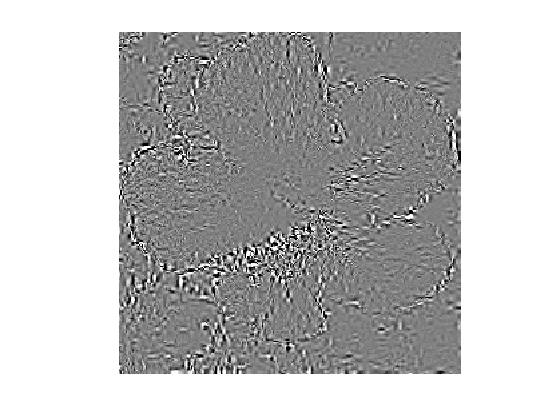
The study of digital image processing is continued with the study of digital image watermarking. What exactly is watermarking? Watermarking is the process of of embedding a signature of some kind into a digital signal. Of course, watermarks are very common with currency, in order to prevent coutnerfeit currency from being easily produced. In the digital domain, watermarking is used for a variety of reasons. These reasons include authenticity, information hiding, and copyright protection. With all the digital files being sent all over the world today, digital watermarking is important because it allows one to protect their files from copyright infringement.
In this section, Mr. Peyrê uses "0 bit" watermarking. Unfortunately, there is no meaningful message in this watermarking. He is mainly interested in testing to determine if there is a precense of a watermark. Mr. Peyrê embeds a simple watermark into Wavelet coefficients. He then checks to see how much of the watermark can be detected. He then computes the probability of detecting the watermark.
The plot below shows the familiar hibiscus image that will be used in this investigation of watermarking.

Here are the Wavelet coeffcients:

Only a specific subset of the Wavelet coefficients will be watermarked. Mr. Peyrê selects the fine Wavelet coefficients. From the picture above, this includes everything but the distinct grayscale segment in the top left corner of the flower. The reason that segment looks fairly good is because the low frequency components retain most of the foundational aspects of the image. The formula for the watermarking is given below. The vector x0 contains contains the fine detail Wavelet coefficients:
Where is a random Gaussian vector, and
is a constant greater than 0 that ensures
is a given deviation value. (1)
Now we some noise to the signal

Now the embedding is performed, this is given by the formula:
The resulting distortion is measured using a metric called the PSNR, which is given by:
With this formula, we can check the PSNR of the embedding:
PSNR(x,x0) = 50dB
Next, we compute the image that now contains the watermark. Now that some of the wavelet coefficients have been watermarked, the image can be reconstructed with the following forumula:
The image below shows the watermark over the spatial. Mr. Peyrê has added some contrast boosting.

Here, I quote the words of Mr. Peyrê directly. "The watermark is detected (or not detected) from an input vector
using a detector function
where
is the base watermark vector. Usually, a large value for C means that y is likely to come from a watermarked content.
The detection is carried over by a simple thresholding, and the watermark is declared to be present if:
where
is a threshold that should be set to guarentee a given probability of false alarms." (2)
Mr. Peyrê goes on to elaborate in more detail about the rest of this process. Frankly, this process gets complicated. Essentially, one obtains a vector, y, which contains elements .
From this, one can determine the probability of false alarms, and the probability of true positives. This might seem problematic, after all, how can does one have any way to determine these probabilties?
A critical assumption is made. We assume that the output vector y, is close enough to the original signal, so that the probabilties can be estimated. For now, this is going to be as far as I go in
this section. This section touches on subjects like probability which I am yet to study. However, as of August 7, 2014, I have the book, "Digital Watermarking and Steganography" on the way, so perhaps
I'll be able to come back to this section sometime soon. The next section I will examine is denoising methods for images.
Works Cited
(1) Peryê, Gabriel. "Wavelet Domain Image Watermarking." Wavelet Domain Image Watermarking. N.p., 2010. Web. 05 Aug. 2014.
(2) Peryê, Gabriel. "Wavelet Domain Image Watermarking." Wavelet Domain Image Watermarking. N.p., 2010. Web. 05 Aug. 2014.
G. Peyré, The Numerical Tours of Signal Processing - Advanced Computational Signal and Image Processing, IEEE Computing in Science and Engineering, vol. 13(4), pp. 94-97, 2011.